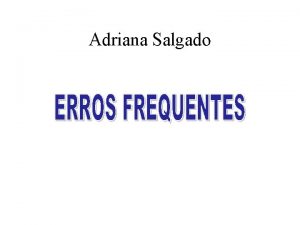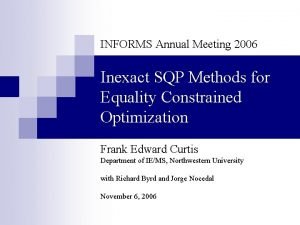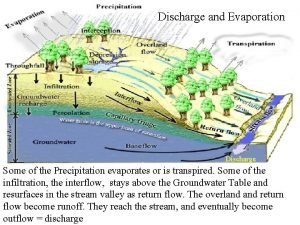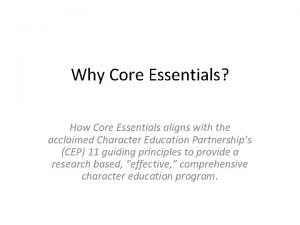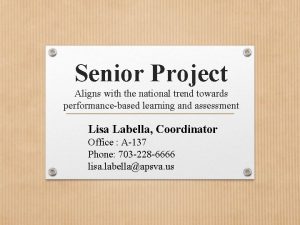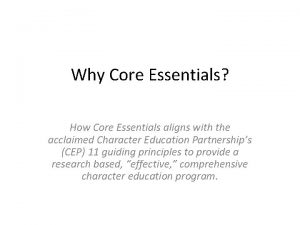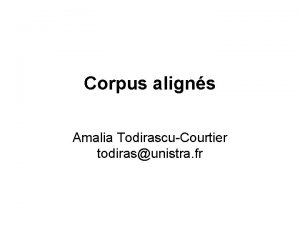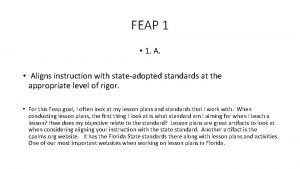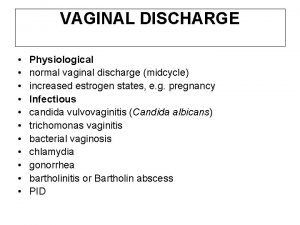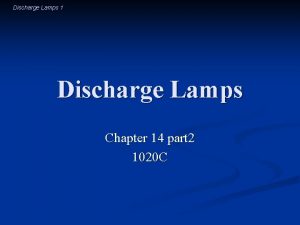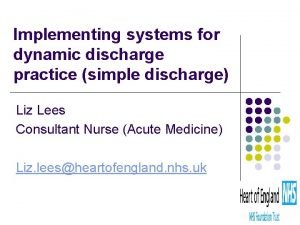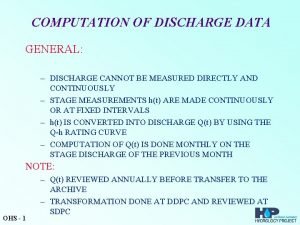AFIM Day 3 Informs discharge decisionmaking and aligns
















- Slides: 16

AFIM® Day 3 § Informs discharge decision-making and aligns services to patient needs § Alpha. FIM® scores can be compared with FIM® (Functional Independence Measure) scores in order to evaluate access to stroke rehabilitation services and to monitor patient outcomes across sectors and databases § Quantify the functional impact of stroke in the acute care setting § Data collected from the Alpha. FIM® is standardized via Special Project 740 • AFIM® should be completed on Day 3 post admission to hospital • LOS for ischemic stroke 5 days • LOS hemorrhagic stroke 7 days Who can do the AFIM?


FAQ TOP HITS • General: • How do I rate patients over a 24 hour period? • How is ‘extra time’ defined?

FAQ TOP HITS Locomotion: • Why are there no scores below 3? Eating: • What if my patient wears dentures? • What about finger sweeping?

FAQ TOP HITS Grooming: • What tasks do I rate the a patient on? • What does ‘retrieving items’ mean? • How do I rate if the person needs assistance to get to and from the bathroom for grooming?

FAQ TOP HITS Bowel Management: • Continent but needs help wiping? • No bowel movement during the assessment time? • Uses a commode? • Incontinent of bladder?

FAQ TOP HITS Toilet Transfers: • What if patient uses a wheelchair? • What if the need help with clothing? • How do I rate if they use a bedside commode? • What if they use a walker for toilet transfers? • What distance is measured for approach to the toilet?

Helpful Hints • Level 4: patient needs touching, steadying or contact guard assistance only or all aspects of transfer • Level 3: patient needs no more than contact guard assistance to approach the toilet but needs lifting assistance for standing OR sitting • Level 2: no more than contact guard to approach the toilet but needs lifting assistance for standing AND sitting • Level 1: patient needs more than contact guard assistance to approach the toilet, sit and stand

FAQ TOP HITS Expression: • What are abstract/complex ideas? • How if the patient has a trach and you lip read? Memory: • How is memory defined?

FAQ TOP HITS Transfer Bed: Chair: • What aspect of the transfer are assessed? • What is the difference between a 2 and a 1? • Do I assess them going in both directions?

Item AFIM Time frame for assessment 24 hours, complete on Day 3 (day admitted is Day 1) 72 hours. Complete by day 3 post admission to Rehab Eating, Transfers Bed, Chair, Toilet Transfers same Grooming Same Bathing Not included Included – 10 body parts, 10% each Dressing Upper Body/Lower Body Not included Included- Rate assistance required with clothing worn most frequently. Includes dressing, undressing and reaching/retrieval. Toileting not included, Toilet Transfers Only (safely getting on and off the toilet) Adjusting clothing before & after and hygiene Bladder Management Not included Included: Level of assistance & frequency of accidents (take the lower score) Bowel Management Control of bowel movements and equipment (not hygiene) Bowel management and frequency of accidents (take the lower score) Tub shower transfer Not included Included: getting into and our to tub or shower stall, bed bath = 1, considered total assist Locomotion: Walk/Wheelchair Includes WALK only. Patient must perform 150 Included: Walk 150 feet once in standing position or can feet without rest breaks once in standing. If pt. use/move wheelchair 150 feet once seated can not walk 150 feet walk will not be assessed. Locomotion: Stairs Not included Yes included- includes going up and down 12 -14 stairs indoors, rate # of stairs and level of help.

Item AFIM Comprehension Not included Included. Reflect client ability to understand information from a functional perspective Expression same Same Social Interaction Not included Included.

Case Study Examples • • Samantha has a feeding tube for nutrition. After a nurse sets up equipment , Samantha’s independently administers her tube feeding, what is the rating for eating? 5 Sandy needs help applying her eye make up but completes all her other grooming tasks after a helper provide set up assistance. What is her rating for Grooming? 4 Joseph uses the bed pan frequently throughout the night due to C-diff. He rolls from side to side but a helper must position the bedpan under him each time. Helper cleans the bedpan and returns it to the night stand. What is his rating for Bowel Management? 4 Brian transfers from supine position in bed to sitting on EOB without assistance. He requires contact guard assistance to stand pivot and assistance to lower himself into the chair safely. What is his rating for transfer, bed- chair? 3

• • • Margaret walks to the bathroom with use of a walker. She transfer onto the toilet without assistance. When she is done she rings the bell and calls for assistance. Helper provide contact guard assistance as she transfers off the toilet. What is her rating for Transfers: Toilet? 4 Susie walks over 150 feet with two wheeled walker, but a helper follows with a chair in case Susie fatigues and needs to sit. What is Susie’s AFIM rating for Locomotion: Walk 5 Richard uses a computer to communicate with staff and communicates his personal needs, discusses discharge plans and indicates services he has used in the past. What is his AFIM rating for Expression 6

• • • Tom recognizes staff members and remembers his daily schedule most of the times, requiring prompting less than 10% of the time. What is his rating for Memory? 5 John is on calorie count due to poor intake. He eats 3 meals during the day but requires IV at night. The IV is administered by the nurse to maintain adequate hydration. What is his AFIM rating for eating? 1 Jeremy refuses to participate in any grooming activities and he does not allow helper to complete them for him. What is Jeremy’s AFIM rating for Grooming? 1 Jaidon requires 2 helpers to get on and off the bedpan. He has not had any bowel accidents in the last 24 hours. What is his rating for Bowel Movement? 1 Emily transfers from bed to bedside commode using sliding board. Emily positions the sliding board, helper supervised her for safety to complete the transfer. What is the rating for Transfer: Toilet 5

• • • John walks over 150 feet with a rollator walker. A therapist must periodically advance his right foot as he fatigues. What is his AFIM rating for locomotion? 4 Mr. Riese expresses his basic needs. He asks the nurse when he needs to go to the bathroom, when he is hungry and wants food and when he is cold and needs a blanket. He gets confused when he attempts to talk about the plot of a TV show that he has recently watched. What is Mr. Riese’s AFIM rating for Expression? 5 Over a 24 hour period, Mr. Jones remembered his nurse, and therapist; however he required prompting by staff more than half the time to remember his daily routine. What is his AFIM rating for memory? 2
 Survey of household economics and decisionmaking
Survey of household economics and decisionmaking Day 1 day 2 day 3 day 4
Day 1 day 2 day 3 day 4 By default, excel _____ aligns text entries.
By default, excel _____ aligns text entries. Progressão aritmética
Progressão aritmética A fim de ou afim
A fim de ou afim Day 1 day 2 day 817
Day 1 day 2 day 817 Terumo same day discharge
Terumo same day discharge Pie persuade inform entertain
Pie persuade inform entertain Paragraphs that informs
Paragraphs that informs Informs annual meeting
Informs annual meeting Which type of essay explains, informs, defines?
Which type of essay explains, informs, defines? Cap analytics certification
Cap analytics certification Informs marketing science
Informs marketing science Beautiful sunday evening
Beautiful sunday evening R22 pt chart low side
R22 pt chart low side Exit exit access and exit discharge
Exit exit access and exit discharge Exit exit access and exit discharge
Exit exit access and exit discharge




